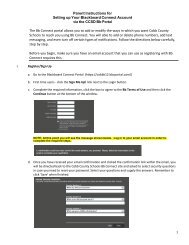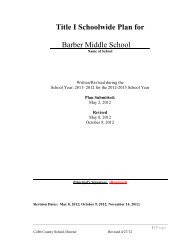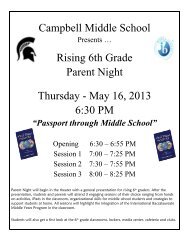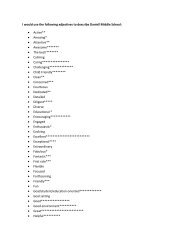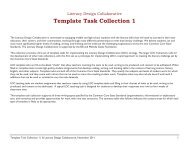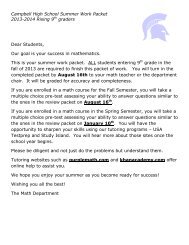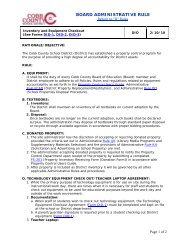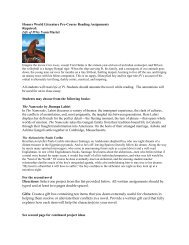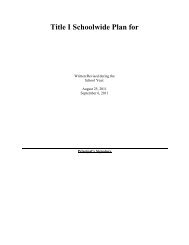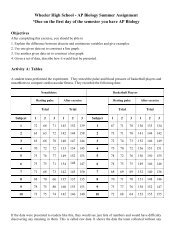Elementary Science Fair Planning Guide - Cobb County School ...
Elementary Science Fair Planning Guide - Cobb County School ...
Elementary Science Fair Planning Guide - Cobb County School ...
Create successful ePaper yourself
Turn your PDF publications into a flip-book with our unique Google optimized e-Paper software.
100cmStep 4: The Presentation or Why you needed allthose pictures….But First, a school Fable….Sammy and Sally both baked cakes for the bake sale with the same cake mix and by following the same directions.When Sammy got his cake out of the oven, he carefully took it out of the pan, smoothed the chocolate frostingneatly and decorated his cake so that it looked delicious. Sally on the other hand, smashed her cake slightly whengetting it out of the pan and globbed the frosting on parts of the cake. As you may have already guessed, everyonewanted some of Sammy’s cake and no one wanted Sally’s. Sally couldn’t figure out why, because she tastedboth and they both tasted the same…A good display isa Piece o’cakeYou may have become the leading expert of your topic and had the most interesting experiment results, but if youdon’t make your science project look delicious for the judges eyes to see, well, your chances of winning sweepstakeswill crumble like Sally’s cake. Your display board is kind of like an advertisement for all your hard work. So take our advice: BENEAT!! The judges like to see a nice, easy to read display, that has neat writing, easy to read graphs and tables and you guessed it….lots and lots of pictures!! (Did you remember to take pictures?)MAKING A MOUTH WATERING DISPLAYThis is an example of a neat looking <strong>Science</strong> <strong>Fair</strong> Display Board. It is just an example. Depending on your informationand the amount pictures, tables and graphs, you may have a different layout. Just make sure it isneat.180cm#1#11#6#11#9#2#8#3#7 #11#5#10#11#4 #11#9#1. Title (name of project)#2. Purpose: Reason for theproject…. your question, what youwant to find out.#3. Hypothesis: A prediction thatyou make of the results beforeconducting the experiment.#4. A report of your research on thesubject.#5. Books and Resources: A list ofthe books you read and websitesyou used. Also list your interviews.#6. Materials: a list of the suppliesneeded for the experiment.#7 Procedure: The steps or directionsthat you used to conductthe experiment.#8. Variables: The parts of the experimentthat will stay the sameand the what will be tested to getthe results.#8. Results: Graphs or charts showing what happened after youcon- ducted your experiment.*May not apply to ALLprojects.#9. Conclusion: Telling what happened..Did it work, were you rightabout the hypothesis? What didyou learn?#10. Application: Explain how yourexperiment relates to the realworld.#11. Pictures, pictures and more pictures...Display Beauty Secrets:• Use a computer to type out your information, but if you can’t, write out your information in your best writing. Printing the titles is usually best. If you areusing a computer, make sure the fonts are readable and only use one or two type faces.• Use spray adhesive or glue stick to paste up your papers. It is less messy• Mount white paper, pictures, graphs and tables on colored papers (making sure the colored paper is larger so it creates a border for the white paper. ) Do notColored paperCreates borderWhite paper, picturesor graph/tables Page 12




